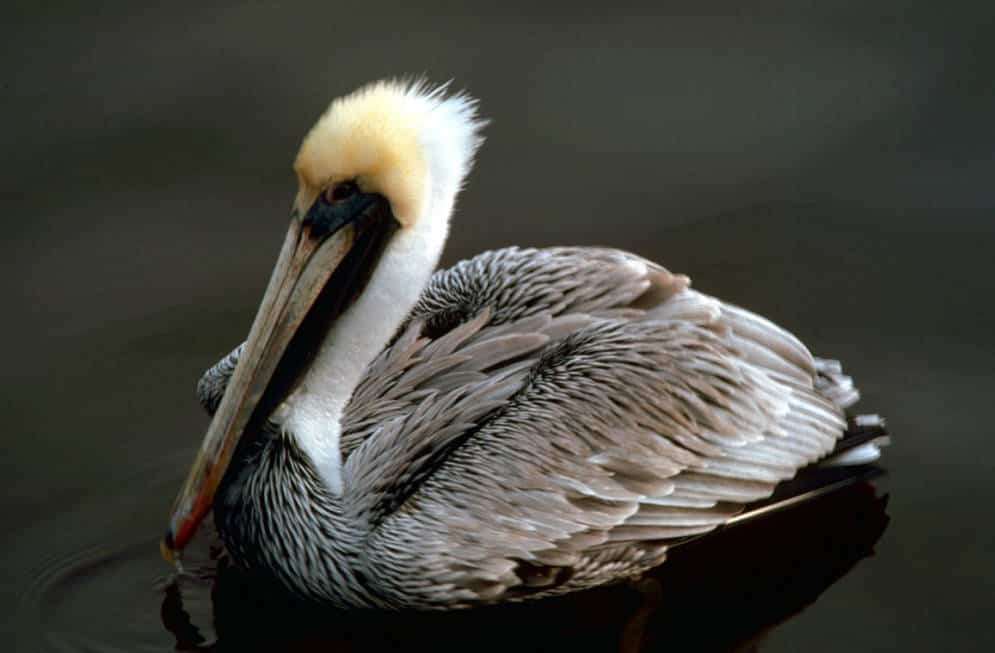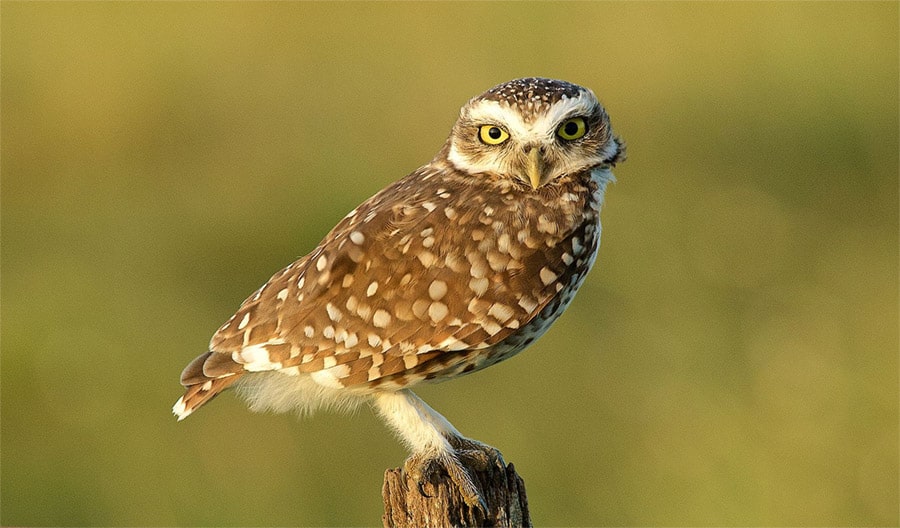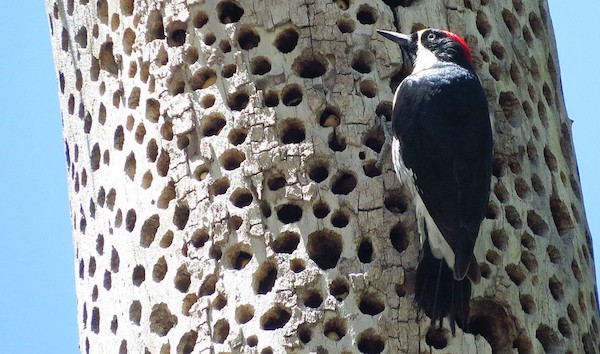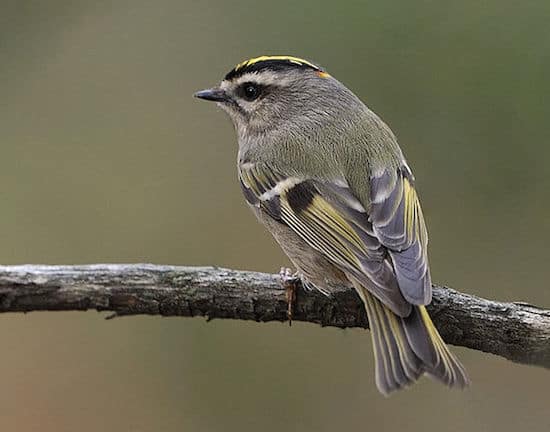At 4 feet long and with a 7-foot wingspan, the brown pelican is one of our largest and most distinctive birds. The brown pelican’s profile and marine habitat make identification easy. These massive birds have pencil lead-gray bodies and blackish flight feathers.
North America’s other pelican, the larger American white pelican, winters in parts of the South in freshwater or brackish habitats, but it is white with black flight feathers and a bright orange bill.
During nesting season, the brown pelican sports a chocolate-brown hind neck; at other times, it is white necked. Yellow adorns the bird’s crown at all seasons, but is a richer color during breeding season.
Listen for
Except for young birds in the nesting colonies, these birds are nonvocal.
Find it
Brown pelicans are a familiar sight, flapping low over southeastern bays or cruising over the surf at the beach. In recent years, their range has expanded northward, with birds nesting in Maryland and up to New York. While they feed in public places, they require protected nesting areas.
During the DDT era, brown pelican colonies failed and steeply declined, but numbers are recovering to former levels. Disturbance at breeding sites by boaters and beachcombers still causes problems at some nesting islands.
Feed it
Sardines, anchovies, menhaden, and other fish catch brown pelicans’ attention, sending them from horizontal flapping and gliding to angled plunges into the water. As a brown pelican hits the surface and briefly sinks, its bill opens and its pouch fills with up to 21/2 gallons of water.
The bird quickly strains out the water from its bill and swallows any captured fish. In some coastal states, brown pelicans loiter around docks and tussle over discarded fish scraps.
Nesting Behavior
Brown pelicans breed in colonies, setting up stick nests in trees such as mangroves, or nesting on scrapes in soil or on lumps of vegetation on islands. The female usually lays three white eggs, which both she and her mate incubate for about a month. Parents also share feeding duties for up to nine weeks, after which their young leave the nest.
WOW!
Brown pelicans are back from the brink after conservation measures were strengthened and a ban on the pesticide DDT, which caused widespread breeding failure among these birds in the 1960s and 1970s, was instituted. The United States’ first national wildlife refuge was established in Florida to protect a beleaguered brown pelican colony.




